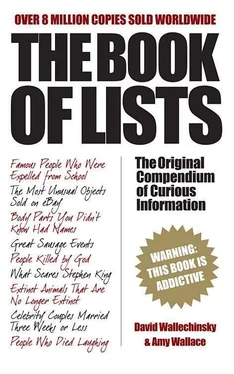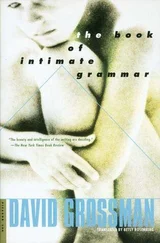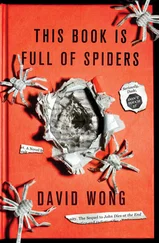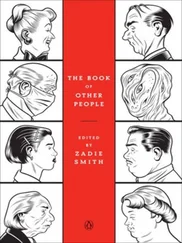GEORGE HICKEY JR
According to Bonar Menninger’s book Mortal Error — based on 25 years of research by ballistics expert Howard Donahue — Kennedy was accidentally killed by Hickey, a secret service agent in the car behind the presidential limo. According to this theory, when Oswald began shooting, Hickey reached for his rifle and slipped off the safety. As he tried to stand in the backseat of the car to return fire, he lost his balance and accidentally pulled the trigger, firing the shot that killed the President. Hickey himself had told the Warren Commission that he did not even pick up his rifle until after the fatal shot.
FRANK STURGIS and OPERATION 40
Marita Lorenz, a CIA operative who had been Fidel Castro’s mistress, told the New York Daily News in 1977 that she had accompanied Lee Harvey Oswald and an assassination squad to Dallas a few days before Kennedy was killed. She identified her companions on the trip as CIA operative (and future Watergate burglar) Frank Sturgis and four Cuban exiles: Orlando Bosch, Pedro Diaz Lang and two brothers named Novis. The men were members of ‘Operation 40’, a group of about 30 anti-Castro Cubans and their American advisors originally formed by the CIA in 1960 for the Bay of Pigs invasion. Lorenz later stated that Sturgis had been one of the actual gunmen and that he told her after the assassination, ‘You could have been part of it — you know, part of history. You should have stayed. It was safe. Everything was covered in advance. No arrests, no real newspaper investigation. It was all covered, very professional.’ Sturgis denies that there is any truth to Lorenz’s story. However, he once said that the FBI questioned him about the assassination right after it happened, because, the agents said, ‘Frank, if there’s anybody capable of killing the President of the United States, you’re the guy who can do it.’
JAMES FILES and CHARLES NICOLETTI
In 1996 Files claimed that he and Nicoletti, a Mafia hitman, had been on the grassy knoll at Dealey Plaza and that they had both shot President Kennedy at the same time. Files said that he was paid $30,000 and had orders not to hit Jacqueline Kennedy. He added that Nicoletti took his order from Sam ‘Momo’ Giancana, who in turn answered to Anthony ‘Big Tuna’ Accardo. Since all three mobsters were murdered between 1975 and 1977, there was no one to corroborate Files’s story. The FBI dismissed the story, noting that Files is now serving a 50-year sentence in Illinois for murdering a policeman and thus had little to lose by ‘confessing’ while gaining his 15 minutes of fame.
– C.F.
18 SECRET ARMIES OF THE CIA
UKRAINIAN PARTISANS
From 1945 to 1952 the CIA trained and aerially supplied Ukrainian partisan units which had originally been organised by the Germans to fight the Soviets during WWII. For seven years, the partisans, operating in the Carpathian Mountains, made sporadic attacks. Finally, in 1952, a massive Soviet military force wiped them out.
CHINESE BRIGADE IN BURMA
After the Communist victory in China, Nationalist Chinese soldiers fled into northern Burma. During the early 1950s, the CIA used these soldiers to create a 12,000-man brigade which made raids into Red China. However, the Nationalist soldiers found it more profitable to monopolise the local opium trade.
GUATEMALAN REBEL ARMY
After Guatemalan president Jacobo Arbenz legalised that country’s Communist party and expropriated 400,000 acres of United Fruit banana plantations, the CIA decided to overthrow his government. Guatemalan rebels were trained in Honduras and backed up with a CIA air contingent of bombers and fighter planes. This army invaded Guatemala in 1954, promptly toppling Arbenz’s regime.
SUMATRAN REBELS
In an attempt to overthrow Indonesian president Sukarno in 1958, the CIA sent paramilitary experts and radio operators to the island of Sumatra to organise a revolt. With CIA air support, the rebel army attacked but was quickly defeated. The American government denied involvement even after a CIA B-26 was shot down and its CIA pilot, Allen Pope, was captured.
KHAMBA HORSEMEN
After the 1950 Chinese invasion of Tibet, the CIA began recruiting Khamba horsemen — fierce warriors who supported Tibet’s religious leader, the Dalai Lama — as they escaped into India in 1959. These Khambas were trained in modern warfare at Camp Hale, high in the Rocky Mountains near Leadville, Colorado. Transported back to Tibet by the CIA-operated Air America, the Khambas organised an army numbering at its peak some 14,000. By the mid-1960s the Khambas had been abandoned by the CIA but they fought on alone until 1970.
BAY OF PIGS INVASION FORCE
In 1960 CIA operatives recruited 1,500 Cuban refugees living in Miami and staged a surprise attack on Fidel Castro’s Cuba. Trained at a base in Guatemala, this small army — complete with an air force consisting of B-26 bombers — landed at the Bay of Pigs on April 17, 1961. The ill-conceived, poorly planned operation ended in disaster, since all but 150 men of the force were either killed or captured within three days.
L’ARMÉE CLANDESTINE
In 1962 CIA agents recruited Meo tribesmen living in the mountains of Laos to fight as guerrillas against Communist Pathet Lao forces. Called l’Armée Clandestine, this unit — paid, trained and supplied by the CIA — grew into a 30,000-man force. By 1975 the Meos — who had numbered a quarter million in 1962 — had been reduced to 10,000 refugees fleeing into Thailand.
NUNG MERCENARIES
A Chinese hill people living in Vietnam, the Nungs were hired and organised by the CIA as a mercenary force, during the Vietnam War. Fearsome and brutal fighters, the Nungs were employed throughout Vietnam and along the Ho Chi Minh Trail. The Nungs proved costly since they refused to fight unless constantly supplied with beer and prostitutes.
PERUVIAN REGIMENT
Unable to quell guerrilla forces in its eastern Amazonian provinces, Peru called on the US for help in the mid-1960s. The CIA responded by establishing a fortified camp in the area and hiring local Peruvians who were trained by Green Beret personnel on loan from the US Army. After crushing the guerillas, the elite unit was disbanded because of fears it might stage a coup against the government.
CONGO MERCENARY FORCE
In 1964, during the Congolese Civil War, the CIA established an army in the Congo to back pro-Western leaders Cyril Adoula and Joseph Mobutu. The CIA imported European mercenaries and Cuban pilots — exiles from Cuba — to pilot the CIA air force, composed of transports and B-26 bombers.
THE CAMBODIAN COUP
For over 15 years the CIA had tried various unsuccessful means of deposing Cambodia’s left-leaning Prince Norodom Sihanouk, including assassination attempts. However, in March 1970 a CIA-backed coup finally did the job. Funded by US tax dollars, armed with US weapons and trained by American Green Berets, anti-Sihanouk forces called Kampuchea Khmer Krom (KKK) overran the capital of Phnom Penh and took control of the government. With the blessing of the CIA and the Nixon administration, control of Cambodia was placed in the hands of Lon Nol, who would later distinguish himself by dispatching soldiers to butcher tens of thousands of civilians.
KURD REBELS
During the early 1970s the CIA moved into eastern Iraq to organise and supply the Kurds of that area, who were rebelling against the pro-Soviet Iraqi government. The real purpose behind this action was to help the Shah of Iran settle a border dispute with Iraq favourably. After an Iran–Iraq settlement was reached, the CIA withdrew its support from the Kurds, who were then crushed by the Iraqi Army.
Читать дальше












